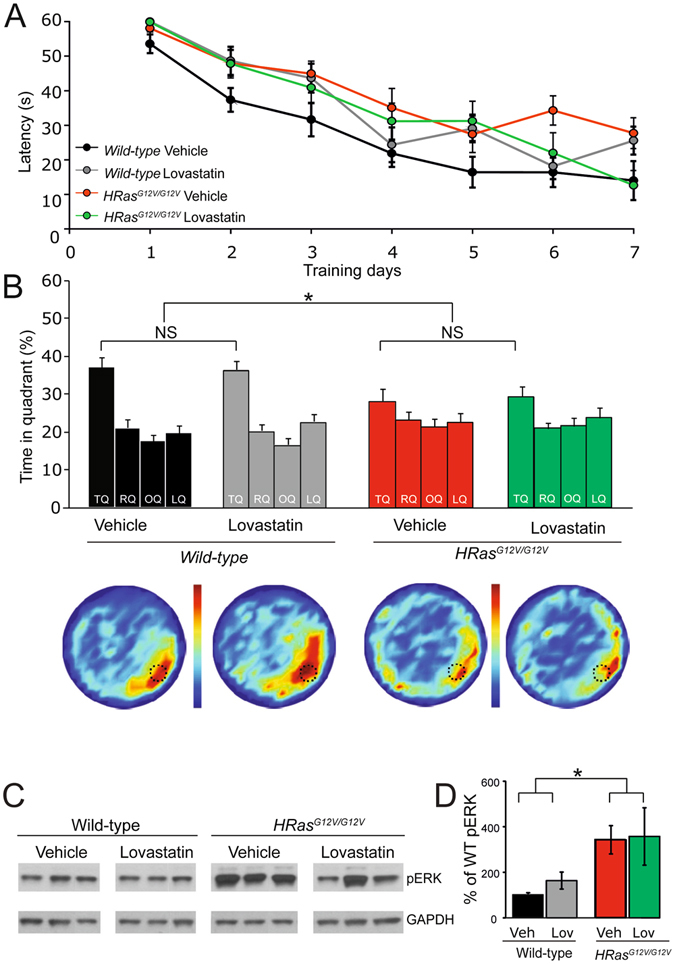Figure 6.

Lovastatin does not rescue learning deficits or increased pERK level in HRas G12V/G12V mice. (A) Average latency to platform for each day of training, per genotype. A Significant effect of learning on the latencies of all groups was observed (within subject comparison: effect of time: F 1,58 = 46.80, P < 0.01). On average, HRas G12V/G12V mice (both groups: lovastatin and vehicle treated) showed significantly longer latencies compared to wild-type littermates (between subjects comparison: effect of genotype: F 1,58 = 5.89, P < 0.05). No effect of treatment on latencies was observed (between subjects comparison: effect of treatment: F 1,58 = 0.23, P = 0.63). (B) Probe trial data of watermaze learning shows that lovastatin did not rescue the learning deficit in HRas G12V/G12V mice (effect of treatment: P = 0.76; genotype*treatment interaction P = 0.79). TQ = target quadrant, RQ = adjacent right quadrant, LQ = adjacent left quadrant, OQ = opposite quadrant. Heat plots represent all search tracks combined, in which the color indicates the mean time spent at that position in the pool. Data are presented as mean ± SEM. *P < 0.05. NS: Not significant. Number of mice: vehicle group wild-type n = 17; HRas G12V/G12V n = 12; treated group: wild-type n = 17; HRas G12V/G12V n = 14. (C) Western blots of hippocampal lysates of the WT and HRas G12V/G12V mice showing an increased pERK level in untreated HRas G12V/G12V mice, but no effect of lovastatin on pERK level. (D) Quantification of Western blots. A significant effect of genotype was found in pERK level (F 1,20 = 6.48, P < 0.05). No main effect of treatment on pERK could be detected (F 1,20 = 0.21, P = 0.65; interaction genotype*treatment: F 1,20 = 0.08, P = 0.78). Data are presented as mean ± SEM normalized to vehicle group wild-type. n = 5; HRas G12V/G12V n = 5; treated group: wild-type n = 7; HRas G12V/G12V n = 7. Three mice per group are depicted in the example blot. Statistical test: two-way MANOVA.
